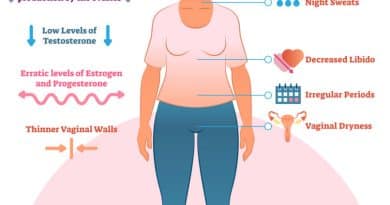Why you have those stubborn white spots on your teeth that won’t go away
Eftoefto / Getty images
- White spots on your teeth can be due to a number of things from malnutrition to poor oral hygiene.
- Once those white spots turn up it’s hard to get rid of them but you can reduce their appearance.
- To prevent more white spots from showing up practice good oral hygiene and limit sugar.
- Visit Insider’s Health Reference library for more advice.
There are numerous teeth-whitening products that can turn dark areas whiter. But what about spots on your teeth that are already too light?
White spots on your teeth, also known as white spot lesions, are places where the surface enamel is decalcified. This typically happens as a result of poor dental hygiene or malnutrition at a young age, which leads to weakened tooth enamel that is more susceptible to plaque and bacterial decay.
These white spot lesions aren’t usually painful or harmful, and you can prevent additional spots with the right lifestyle changes and treatments.
Here are the most common causes of white spot lesions on teeth — and what you can do to reduce their appearance and prevent future ones from cropping up.
1. Consuming too much sugar
More than 50% of drinks consumed in the developed world are sugar-loaded soft drinks or fruit-based beverages. And that’s a problem for dental health as excess sugar combines with bacteria in your mouth to produce acid that then eats away your enamel, weakening it and making it more prone to white spots and cavities.
Your risk of tooth erosion linked to sugary drinks increases with age, with one study citing that 25% of children ages 11-14 experienced significant tooth erosion. This number increased to 77% in adults ages 20-25.
What to do: Once these spots turn up, you can’t get rid of them. However, you can prevent more spots from appearing by drinking and eating less sugary foods.
If you can’t fathom eating less sugar, then you may still find preventative help with topical fluoride which can improve your enamel’s resistance to the microbial acids caused by a sugary diet. There are plenty of topical fluoride options you can use at home, like toothpastes, mouthrinses, and gels.
Ask your dentist about what may work well for you. They may also provide a prescription strength fluoride for you to use at home.
If you’re looking for a stronger and more effective option, you can have your dentist or dental hygienist apply higher-strength topical fluorides in the form of rinses, gels, foams, or fluoride varnishes.
2. Poor oral hygiene
“One of the leading causes of these spots on the teeth is poor oral hygiene and habits, which causes a buildup of bacteria plaque in the mouth,” says Shahrooz Yazdani, DDS and CEO/Director of Yazdani Family Dentistry. This can lead to something called decalcification.
Decalcification happens when plaque build up weakens your teeth, resulting in a loss of calcium and other minerals.
Without these minerals, the acid created from bacteria in plaque can dissolve or weaken your enamel and cause white decalcification spots that are sensitive to touch. Eventually, these decalcified areas may turn into cavities.
Both adults and children are susceptible to spots from decalcification, says Yazdani. If you’re not following proper oral hygiene (brushing twice a day and flossing once a day), your risk of decalcification increases.
What to do: Decalcification should not be left untreated, as this can be a precursor to worse problems, like cavities and tooth decay.
“If you have noticed white spots on your teeth that are causing you pain, or if you are worried about them getting worse, you should visit your dentist as soon as possible,” says Yazdani.
White spot lesions from decalcification are often permanent. However, cosmetic solutions to tooth decalcification include veneers, teeth whitening, composite bonding, and remineralization.
3. Wearing braces
“Decalcification can happen to anyone, but it is very common after braces because the brackets are a breeding ground for bacteria that cause erosion if a patient’s hygiene isn’t excellent,” says Paul Springs, DMD, and Prosthodontist at Timeless Dentistry.
A small 2014 study of 45 patients who completed fixed appliance therapy (commonly referred to as braces) found that 42% of participants developed at least one white spot lesion while wearing braces. The study also suggests that poor oral hygiene, lack of fluoride supplements, and ingesting sugary drinks and foods all contributed to an increased risk of developing white spots.
“In general, white spots develop where plaque accumulates: near brackets, at the gum line, or between teeth where it’s harder to clean,” says Springs.
What to do: When it comes to preventing white spots, a better option than braces may be clear aligners, like Invisalign. One 2019 study compared participants who wore conventional braces with those wearing an aligner and found that only 1.2% of aligner patients developed white spots, compared to 26% of those wearing traditional braces.
However, clear aligner orthodontics isn’t for everyone, so consult with your dentist or orthodontist to determine what’s best for your case.
While these spots won’t go away after your braces are removed, there are cosmetic treatments you can try to lessen the appearance of unwanted spots. Professional tooth whitening can help even out any color variations. Repairing weakened areas of your teeth via remineralization products can also help strengthen your teeth in the future.
4. Having enamel hypoplasia
“Enamel hypoplasia is a condition that causes thin enamel, resulting in white spots on the teeth,” says Yazdani.
Enamel hypoplasia is not a disease process and does not generally require medical treatment.
It occurs during childhood or before birth as a result of nutritional deficiencies, infections, or systemic disease, which disturb the normal formation of enamel and subsequently can result in discoloration, lines, pits, grooves, or spots of missing enamel.
So if you are noticing new white spots on your teeth as an adult, you might want to rule this condition out. However, if you notice new small white or discolored areas on your child’s teeth, enamel hypoplasia could be to blame.
What to do: Think of your enamel like wet cement that hardens over time. When you’re young, your enamel is still malleable. However, this solidifies by adulthood. Since damage to your enamel does not remodel once it is fully formed, and this condition shows up in childhood or in utero, there’s no way to reverse your symptoms.
Topical fluoride treatments in the form of gel or varnish are effective in preventing tooth decay in children and adults with enamel defects from enamel hypoplasia and related conditions. Other topical treatments, like calcium phosphate, can also be effective in remineralizing areas with enamel defects.
If you have questions or concerns, consult with your dentist or pediatric dentist, if it appears on your child.
5. Had fluorosis as a kid
Fluorosis predominantly occurs in childhood, when children aged 8 or younger are exposed to high fluoride concentrations during tooth development, resulting in more porous teeth that can lead to white spots.
Although the US fluoridates its public water supplies, this alone is not enough to cause fluorosis. What typically causes fluorosis is ingesting too much fluoride at a young age from multiple sources like drinking water with fluoride, using fluoride toothpaste, and taking dietary prescription supplements.
Like other white spot lesions, fluorosis spots are typically opaque and lighter than the rest of the tooth, making them easy to notice.
Most dental fluorosis seen in the United States today is mild and doesn’t affect the aesthetics or function of your teeth.
To reduce your child’s risk of white spot lesions from fluorosis, you can:
- Use only a pea-sized amount of toothpaste on their toothbrush
- Encourage your child to spit toothpaste instead of swallowing it
- Brush your child’s teeth no more than twice a day
What to do: In mild cases of fluorosis, no treatment is required. However, several fluorosis treatment options are available to improve the appearance of affected teeth.
Fluorosis treatment options include:
- Removing potential stains or spots via tooth whitening
- Adding a hard resin coating to the tooth that bonds with your enamel (known as bonding)
- Applying crowns and veneers
How to prevent white spots on teeth
“The best thing you can do to avoid future spots is to practice good dental hygiene,” Springs says.
For example, brushing your teeth with an electric toothbrush combined with water irrigation or proper flossing is better for your oral hygiene than manual tooth brushing.
Also try to avoid or limit decalcifying agents like acidic and sugary foods.
“Brush twice a day, floss once a day, and use fluoride-containing rinses and toothpaste. It won’t fix the damage already done, but it will help prevent new damage,” says Springs.
Insider’s takeaway
In all cases, pre-existing white spots on your teeth are here to stay, unless you take steps with your dentist to help mask them or whiten the tooth enamel around them. It does require professional help.
However, you can prevent future white spots from forming by practicing good oral hygiene and consuming less sugary beverages and foods.
You can also try to reduce spots’ appearance with methods like teeth whitening, remineralization, veneers, or even choosing clear aligner orthodontics for your kids if that is recommended.
Don’t hesitate to ask your dentist about treatment options to help you keep your beautiful smile for a lifetime.


